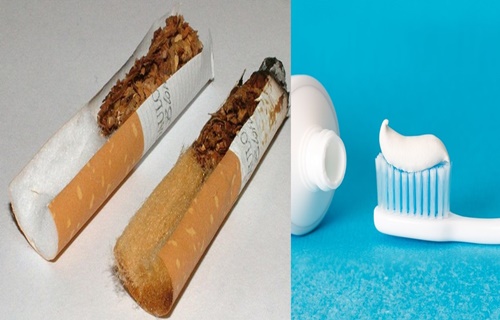Unexpected New Ways of Using Asbestos

Asbestos first entered American homes in the mid-1940s and was still found in some interior home products in the mid-'90s. But not only construction goods made with asbestos; most industry branches applied the toxic mineral in varied manners.
Every production branch wanted the benefits of involving this cheap and versatile mineral in manufacturing, and utilizing asbestos in consumer goods was a familiar concept. It is why during the 20th century, people handled several asbestos products daily. The past centuries' asbestos addiction has made many pay the price nowadays with the ongoing risk of asbestos exposure.
Asbestos Permeated Everything, Even the Toothpaste
Maintaining personal hygiene means cleaning the teeth twice daily - now imagine it with toothpaste laden with asbestos. In the years after World War II, there was a tremendous industrial surge, and companies were inventing new products.
Due to their abrasive qualities, manufacturers added asbestos fibers to one of the new formula toothpaste and advertised the new product as groundbreaking. Because asbestos was considered harmless back then, people were encouraged to put the hazardous carcinogen directly into their mouths by using asbestos toothpaste that was supposed to give them a whiter smile. The toxic fibers would be able to remove stains from their teeth thanks to their abrasiveness.
One of the Innovations in Applying Asbestos: Cigarette Filters
If smoking wasn't already dangerous enough, innovating manufacturers added asbestos to their cigarette filters when trying to come up with new products. Companies were developing new patents for asbestos use as quickly as possible, and cigarette manufacturers might have found the deadliest combination when adding it to the filters.
Kent was one of the biggest brands using asbestos in cigarette filters, as the material has natural filter-like qualities. Between 1952 and 1956, the brand sold and advertised their asbestos-containing cigarettes as products with new filters that would give you a smoother taste. The toxic mineral was dense enough to stop small particles from seeping through but released its microscopic fibers directly into the airways of smokers. They suffered asbestos exposure unbeknownst to them, and everyone near the people who smoked these cigarettes faced the risk of exposure to the toxic fibers. Furthermore, asbestos exposure also affected the workers involved in producing asbestos cigarettes and their families as well.
There Is No Safe Level for Exposure to Asbestos
While most of these unusual ways of using asbestos ran out of fashion by the 1960s, manufacturers still added the material to many popular products. Despite modern restrictions, it continues to threaten people's health because the legacy of old asbestos products continues.
Asbestos causes severe health issues when it becomes friable and releases toxic microscopic fibers. Being around high concentrations of asbestos fibers regularly increases the risk of inhaling or ingesting the dangerous mineral's particles. Since healthcare professionals agree that no quantity of asbestos is safe to inhale or ingest, it's advisable not to take any chances. Seek professional help if you find asbestos-containing products showing visible signs of deterioration, or read our DIY asbestos removal page if you want to handle them yourself.
